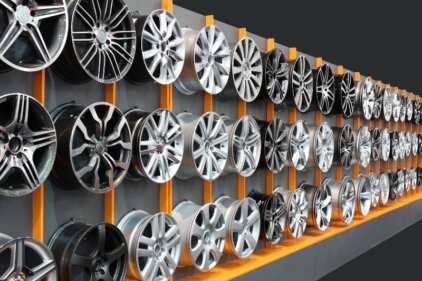Transportation has always been a fundamental aspect of human civilization. From the earliest days of horse-drawn carriages to the modern era of sleek automobiles and electric vehicles, the way we move from one place to another has evolved significantly. Join us as we delve into the captivating history of motorization, exploring the pivotal moments that have revolutionized transportation as we know it.
The Invention of the Automobile
The journey of motorization commenced with the invention of the automobile. In 1886, Karl Benz, a German engineer, introduced the first practical automobile powered by an internal combustion engine. This groundbreaking invention marked the beginning of a new era in transportation. The automobile offered a level of convenience and speed that was previously unimaginable. It transformed the way people traveled, opening up opportunities for exploration and enabling the growth of cities and industries.
The Ford Model T: A Game-Changer in Mass Production
While the invention of the automobile laid the foundation for motorization, it was Henry Ford’s introduction of the Model T that truly revolutionized the industry. In 1908, Ford launched the Model T, a vehicle that was affordable, reliable, and easy to maintain. This marked the advent of mass production in the automotive industry. Ford’s innovative assembly line techniques allowed for the efficient production of vehicles, making car ownership accessible to the masses. The Model T not only transformed the way people traveled but also had a profound impact on society, bringing about cultural shifts and economic growth.
The Rise of the Interstate Highway System
In the mid-20th century, another pivotal moment in motorization history occurred with the development of the Interstate Highway System in the United States. Initiated in 1956, this massive infrastructure project aimed to connect cities and facilitate efficient transportation across the country. The Interstate Highway System not only improved connectivity but also spurred economic growth and suburbanization. It revolutionized long-distance travel, allowing people to traverse vast distances quickly and easily. The impact of this system on the automotive industry and overall transportation landscape cannot be overstated.
The Impact of the Oil Crisis on Motorization
The 1970s witnessed a significant turning point in motorization history with the oil crisis. The Organization of Arab Petroleum Exporting Countries (OAPEC) imposed an oil embargo, causing a sharp increase in oil prices and a scarcity of fuel. This event exposed the vulnerability of a transportation system heavily reliant on fossil fuels. As a result, there was a renewed focus on energy conservation and the need for alternative fuel sources. The oil crisis prompted research and development in the automotive industry, leading to the emergence of more fuel-efficient vehicles and the exploration of alternative energy options.
The Introduction of Electric Vehicles
As concerns about climate change and the environment grew, the automotive industry began to shift towards electric vehicles (EVs). The early 21st century witnessed a surge in the popularity of EVs, with companies like Tesla leading the way in developing high-performance electric cars. EVs offer numerous advantages over traditional gasoline-powered vehicles, including lower emissions and reduced dependence on fossil fuels. The introduction of EVs not only revolutionized the automotive industry but also sparked a global conversation about sustainable transportation.
The Emergence of Ride-Sharing Services
In recent years, the rise of ride-sharing services such as Uber and Lyft has disrupted the traditional concept of transportation. These platforms utilize smartphone apps to connect drivers with passengers, providing a convenient and cost-effective alternative to traditional taxis. Ride-sharing services have transformed the way people commute, reducing the need for private car ownership and promoting the sharing economy. The emergence of these services has had a profound impact on urban transportation, leading to changes in traffic patterns, parking demands, and urban planning.
Autonomous Vehicles: The Future of Motorization
The future of motorization holds incredible potential with the development of autonomous vehicles (AVs). AVs, also known as self-driving cars, have the ability to navigate and operate without human intervention. This technology promises to revolutionize transportation by enhancing safety, improving traffic flow, and reducing congestion. AVs have the potential to transform urban mobility, making transportation more accessible and efficient. However, the widespread adoption of AVs also raises ethical, legal, and regulatory challenges, which need to be addressed before fully embracing this transformative technology.
Environmental Impacts of Motorization
While motorization has undoubtedly brought about numerous benefits, it has also had significant environmental impacts. The combustion of fossil fuels in vehicles contributes to air pollution and greenhouse gas emissions, leading to climate change and adverse health effects. As we strive for a more sustainable future, it is crucial to develop and adopt cleaner technologies in the transportation sector. Electric vehicles, hydrogen fuel cells, and other alternative energy sources offer promising solutions to mitigate the environmental impact of motorization.
Conclusion: The Ever-Evolving Landscape of Transportation
The history of motorization is a testament to human ingenuity and the relentless pursuit of progress. From the invention of the automobile to the rise of electric vehicles and the emergence of autonomous technology, transportation has undergone remarkable transformations. As we look to the future, it is clear that the landscape of transportation will continue to evolve. It is up to us to embrace innovative solutions, prioritize sustainability, and shape a transportation system that is efficient, accessible, and environmentally friendly.





